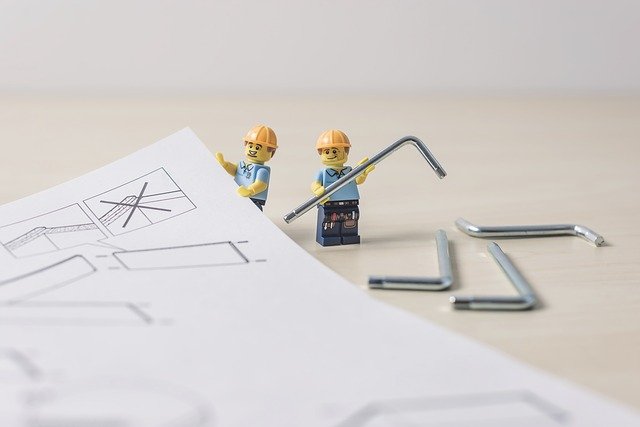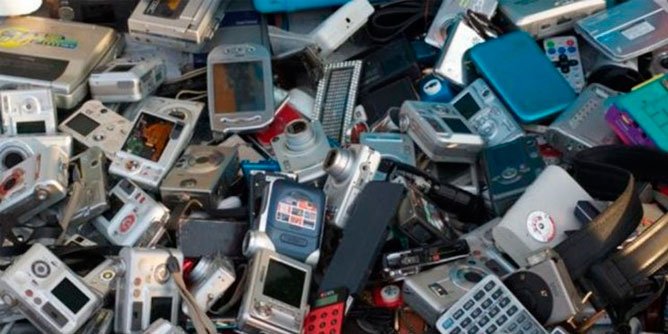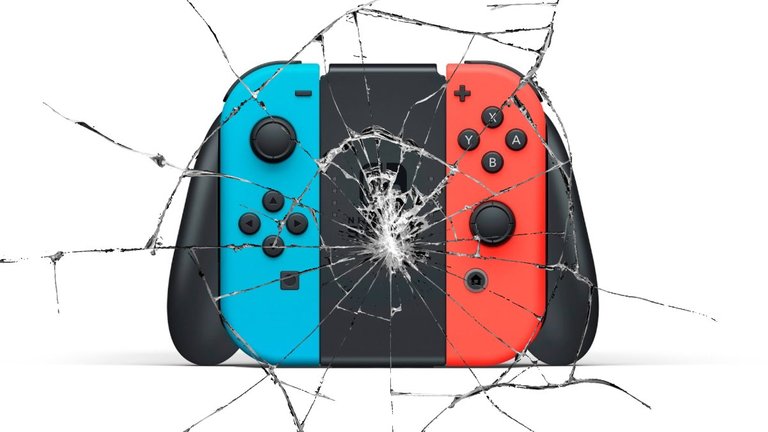Have you ever wondered what would happen if things lasted forever? Or perhaps you yourself have had the idea of creating something that never fails to try to lower costs and be able to spend your money in another way, beyond the usual expenses .
Of course, if we put ourselves in the position of large companies we could say that this would be very bad for our economy, because people would not be constantly looking for our products and this would make it impossible to sustain our companies
However, all of this has a first and last name and is called programmed obsolescence, and it consists of product developers inventing an expiration date for them so that they stop working and thus consumers must purchase the same products periodically.
What is really uncomfortable many times is that this date coincides in a very curious and convenient way, with the purpose of the guarantee with which these products are sold.
But, let's review the history of this a bit, since, in 1871, when Edison invented the first light bulb, which had a useful life of approximately 1500 hours, because he was looking to invent something truly resistant and durable.
However, a few years later an organization would be created that would be responsible for regulating the light bulb trade, and it imposed that these could not last more than 1000 hours; if any manufacturer dared to create or exceed this limit, then he was fined.
However, this would only occur in countries that did not apply communism, since, in them, the products could last up to 25 or 30 years, while in countries that had this regulation, these products would only have a useful life of 5 years. .
Such is the case of a factory in Berlin, which created a long-lasting bulb, but this was blatantly boycotted and the product could not see the light in the commercial market.
In fact, California has the longest operating light bulb in the world, it has been on since 1901.
However, this was something that escaped the naked eye of people who were immersed in their daily lives, but now with the use of the internet, and in part, thanks to social networks, we can realize things that previously escaped our understanding.
One of the cases that has been most publicized through the networks is that of the IPod, which, as we explained previously; When the warranty expired, the battery mysteriously stopped working. Which made us have to buy a new one; since it did not have the advantage of being repaired, much less of replacing the battery.
However, one person took on the task of posting this online, and as a result, this led to a kind of micro revolution, in which several people joined, including a lawyer who gave her consent to take This lawsuit was carried out and later Apple had to increase the guarantee and even create technical support for this class of devices.
Another case is that of printers, which have two modes to encourage us to buy new products. They are a chip that is inside, which is counting the impressions made and in this way when it reaches a certain number it stops working. Or also another of the modalities is that of some sponges located inside the same that when they are filled from so much absorbing the excess ink in each impression forces us to attend the technical service.
However, we have certain classifications. Which are:
Scheduled obsolescence due to:
The classic planned:
It is the aforementioned example, in which one of its main protagonists were Philips, Osram and zeta lamps, which made up the so-called Phoebus cartel. In which, they blatantly reduced the life of the bulbs to a maximum of 1000 hours.
They did this by incorporating very low-quality components, to cause the products to fail and necessitate the renewal of the entire product. The same occurs with alkaline batteries, although it is true that they have a higher performance than those in common use, it is also true that when they stop working they must be discarded.
For repairs:
In this, it is difficult for a damaged product to be repaired, which is done through strategies such as those that a long time must wait to achieve a solution to the problem. In addition, this is characterized because the products in their assembly use special instruments, such as a kind of screws that require a special screwdriver and that is why not everyone has it and the person must go to the specialist.
Another way that these products have is to have a warning in which, if a certain guarantee seal is violated, it would be automatically revoked.
This is often quite annoying, since technical service companies have answering machines or robots that make the person wait for a long time, only to be recommended at the end of the wait to attend an office specialized in this type of problems, but with the special certification provided by the company.
At other times, if the product is no longer under warranty, then the company must supply the spare parts, but these are quite expensive, which pushes the person to the limit of wanting to replace the damaged product with a new one.
Functional:
This is about not incorporating some characteristics into certain product models on a voluntary basis, so that the person has to dispense with these characteristics and still obtain the product, with the promise that in the future a model will be developed that does have these. characteristics requested by the buyer and then he must change the one that is being acquired at the moment for a new one in the future.
Social:
This is the best known and if you want it is the most useless of all with respect to functionality, since it is based on more superficial characteristics, which make the product a kind of giant sign, in which we can presume that we are fashionable or that we have an amount of money large enough to purchase such a product.
All this causes quite effective social pressure that is driven by marketing companies, which are even responsible for making people see some kind of obsolete product, as low-income people or even those who are not at the forefront of the market. .
This is based more than the entire textile fashion industry, which create trends through fashion shows, use influencers, etc. Making that many times we buy unnecessary things and that affect our health in a certain way simply to be able to fit in among the people that make up society.
By region:
This occurs in certain devices such as: DVD and Blu-Ray players, as well as in most video game consoles, since these work according to their geographical region, and in many cases grouped by NTSC or PAL format for the region of Europe;
In this way, it is ensured that these artifacts can only be used in those regions, making it a problem for people to travel and acquire some of them in other latitudes because in this way they will not be able to use them in a continent other than the one originally purchased.
Temporary:
This is based mostly on the virtual field, specifically on the part of video games, since during a season they offer certain characteristics, and at the end of these seasons these formats stop working within the game.
If we transfer it to mobile devices, we can say that, in some cases, their online stores stop working for reasons that we do not understand and in this way the device cannot be updated, being practically useless if you want to be on the go. the vanguard of the new programs supplied by the company to which it belongs.
Those are the types of programmed obsolescence that basically dominate the market and by which we are forced to change the things that we generally use in our daily lives. Of course, those with a higher price tend to have a higher quality.
Planned obsolescence represents a series of disadvantages for the world, since not only does it spend a lot of money, but at the end of the useful life of any product it is discarded, and normally the amount of non-organic waste that we must allocate is greater. to a certain place, and the main affected are countries in Africa; in which large amounts of waste that are not biodegradable are deposited.







What about those contact lenses eh? Can you buy ones that they don't tell you to throw away these days?
What a beautiful post my friend!
Really many things today are made to be changed quickly. See cell phones.
Ps: About the printer, you can reset the counter and start again
When I started working with sales, it started to become more evident to me. I wanted to sell something that had consumption and reuse.
Despite following this idea that today everything has a useful life, in cases that take time to buy others. For example a bed, a wardrobe (My parents' last one is from 1996 and is still in excellent quality, because of the used wood). Refrigerators for example, today I saw the samsgung advertisement giving a 10-year warranty. However, every day there is someone turning 18, getting married, going to live in a new house and needing to buy a product like this.
And just to finish, I started selling perfumes, something they will always buy. Today I also produce and sell candles. Something you will always need to buy. And finally mugs. But mugs are something that lasts, but they are personalized and there are many people who love collecting and giving gifts xD
Long live the capitalist world lol
Now that you mention about the printer, I remember that it was one of the first things that I began to notice years ago that it had a programmed life, until a short time (3 years) I understood what programmed obsolescence is and who benefits!
Thanks for your words friend, and greetings!
What a great article. You have laid out a very important issue in our world today.
Sustainability is the key.
But people are lazy and irresponsible.
In the case of smart phones they have become even more disposable now that you can't replace the batteries.
I am going to some how get off the smartphone wagon because of this.
One of the main problems is that Industry is not held accountable.
They tell the consumers to recycle for example but it is the industries that create most of the waste with no accountability.
It is time that we wake up as consumers and boycott irresponsible companies.
I am trying to do my part by buying products that are responsible but the problem is companies like that are becoming more an more rare.
Thanks for your thought provoking post.
Thank you for that contribution regarding cell phones.
These large companies do it flagrantly, thus maximizing and ensuring their sales, of the new models which is like a great wave, which arrives every 6 months.
The surprising thing, perhaps, is that now they have a large storage capacity, but even so, it never turns out to be enough, because it continues to fill up inexplicably!
The same thing was happening to a Windows box I bought for development. The problem ceased when I installed Linux. We could drop smart phones and go back to PCs. I don't use Hive on phones normally.
I was thinking of finding a tutorial to move my operating system to Linux, I was reading about the obvious advantages of that system!
https://linuxmint.com/documentation.php
Linux will spend less space and mainly less hardware to be able to run.
But when it comes to computers I always advise when to buy to spend more. However, you will have a machine that will last for years. It all depends for what purposes you intend too.
I have at home (which is my brother's now) a Core 2 Quad from 2008. At the time I bought it with a nice video card and 4GB of ram.
A machine that runs today and would run windows 10 if necessary.
Of course, if I were to use heavy programs, she was no longer good for about 5 years + - in any case, she is still functional, mainly to stay here at HIVE for example.
If it is something that I will do in the next few days, I have been opening my eyes a little more regarding this operating system and it is already definitive that I will abandon the window system, and I will change to the side of the penguin!